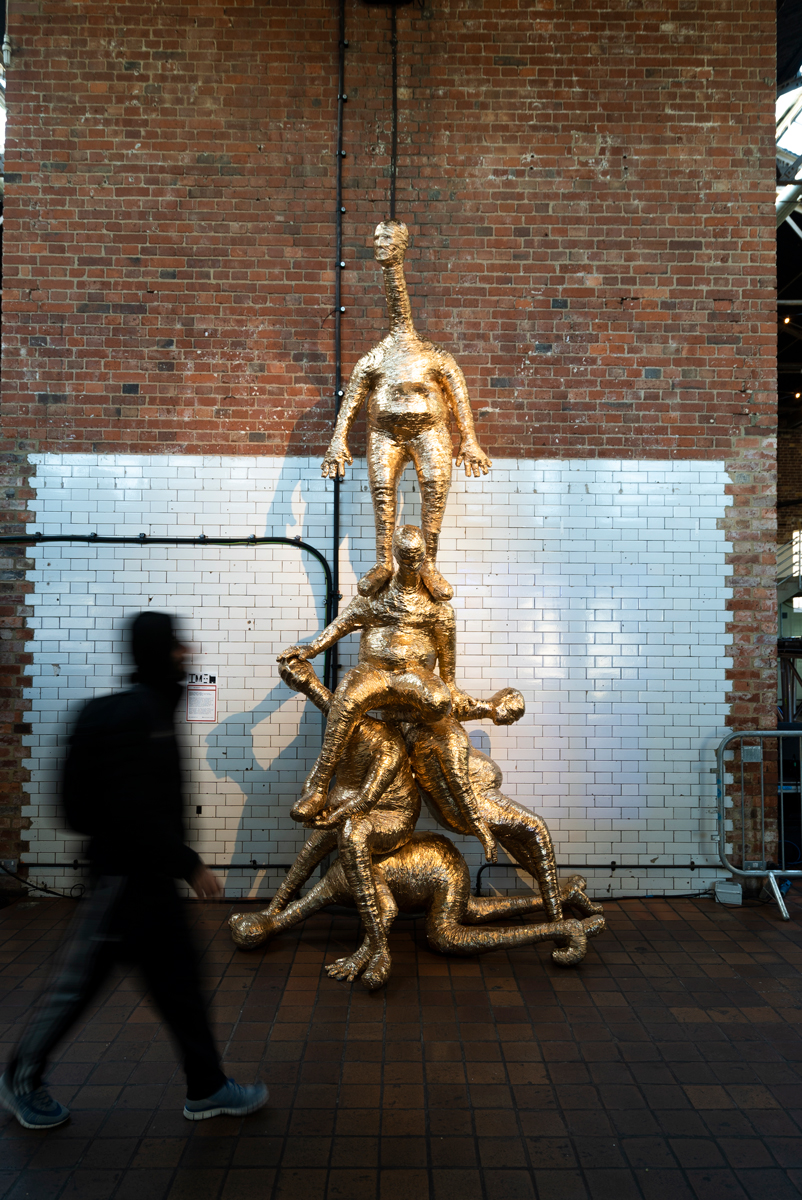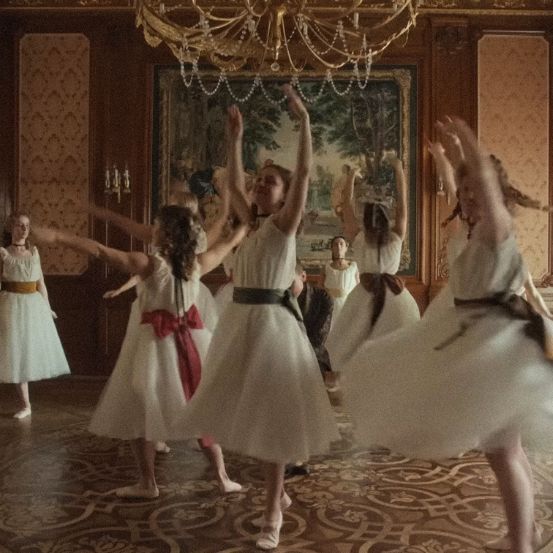Inspire, emotion and move – these are the most common reactions art provokes in us. But, with Robert Panda’s Stupid, spread all over the country, the case changes form.
Inspire, emotion and move – these are the most common reactions art provokes in us. But, with Robert Panda’s Stupid, spread all over the country, the case changes form.

The year was 2011: Portugal had just surrendered and troika came in for its bailout – literally. The group, consisting of the International Monetary Fund, the European Commission and the European Central Bank, proposed an agreement in which the portuguese government would commit to reforms, budget cuts and raising taxes, for a help of 78 billion euros. Spoiler alert: Portugal accepted it. After a crisis that had been lasting since 2008, this was the last resort, following several attempts to fulfill plans of cutting the national expenses. The result was a raise of unemployment rates and the deterioration of quality of life – the average national salary lowered and, consequently, the number of people in risk of poverty increased. Robert Panda, 29 at the time, wanted to call out the stupidity of politicians and bureaucrats, but quickly realized that his way of inspiring the world wasn’t to prompt a political rebellion. On the other hand, Panda’s mission was to encourage kindness and foolishness. And so, the Stupid People Project was born. The first Stupid came to life in the year 2013 in São Miguel, in Açores, in the middle of a landfill. The model, despite being subject to different interpretations, made its intention clear: raise awareness to consumerism and pollution. From then on, the project has become more and more popular – and, in a way, more stupid.
What does the Stupid represent?
The Stupid represents everything and nothing. It can be a friendly being that I use to take pictures of people in the streets, as it can be an aesthetic construction, or an analogy for a video, or even, if I want to, a bean bag for my living room. It’s a tool I use to explain an idea or transmit a feeling, it’s a color palette. It’s me in a message. The Stupid can be a tool for me to express a feeling or something I want to say. When I put it in the street to be photographed and hugged, it’s almost as if it was, unconsciously, asking for more affection and social life. When I make a movie, every Stupid has a color and represents an emotion to me, or an analogy. It’s something unconscious, I don’t think about it when I do it.
How did the idea for the Stupid People Project come to you?
At first, it was driven by troika and the “owners of all this” policy. The idea was simply to hang politicians from bridges, I even tested it out to see if it could work. But then I realized the idea was dumb, to waste time with pseudo revolutions with no inspiring message. So, the object went from a human figure to a friendly being with enhanced features and no facial expression. The idea was just aesthetic, but ended up having way more content than I expected. I called them Stupid because, if it was a first name it would always be personal, so I had to pick something that was common to everyone – everyone is stupid, including me. Usually, who decides where they’re installed in the universe: I pass by and something catches my eye and it has to be there. Other times, whoever pays for it decides, I don’t have much of a say then. Right now, I only install one Stupid for a matter of public health: it’s imperative that there are no concentrations of Stupid. But there were projects where I used several figures. I usually decide for a matter of aesthetic or because the project demands so. Generally, it takes “two stupid” to place one Stupid.
What’s the purpose of this project?
That’s the big question. I don’t know where it’s going or what it could lead to nor why it should have a purpose. Do we have to give it one from the start? I can’t cut its legs like that.
There’s little in your website about the concept of the Stupid. What are some of the most memorable interpretations you’ve heard?
People over 50 always ask me if it’s knocked up. There were some not so nice comments. An artist once asked me if I made them deformed because I couldn’t make them right. My grandmother said she didn’t want any of them at her house, not even if they were gifted, and was very surprised and disappointed to learn that I was paid to do this. Then there’s the regular stuff, some like them, others don’t. Some have been baptized with different names. Everyone is free to call them whatever they like, I’ve been called worse. This one time I picked up a box full of paper from the trash and made an Instagram video where I shredded the paper to make the stuffing for the Stupid. The idea that was perceived was that I was wasting paper that many people wanted and didn’t have. The concept is optional, what matters to me is to cause some sort of reaction. All pieces transmit a message. Now, I can’t control how each person interprets it, nor do I want to. But I’ve been told my work shouldn’t be taken seriously because it was too stupid and with no concept, although those people created nice concepts about how it should be.
When you see a Stupid, what do you see? A friend, an extension of yourself?
I normally see a stage of my life, something I was going through then. I can even tell my state of mind at the moment I made each of them, it’s like a diary that makes me reminisce about certain moments. All of them bring me good memories, even if they were bad experiences. There’s one in particular I hated making, in Fortaleza, Brazil. Everything went wrong, I didn’t finish it for a number of reasons and I don’t even have pictures. Two years passed and I started getting news from there. The Stupid had been installed by a university and, in the mean time, it had been embraced by the community. Without knowing who I was or what its name was, people baptized it “chupa cu”, a creature from an urban legend that looks like the figure. So, it was around the school and everyone liked it. In the meantime, the dean got it removed, which caused riots, petitions and people even striked and all. Later, it was abducted and there was a petition for the Stupid to be installed in the university again, but it wasn’t accepted. I ended up parting from the whole situation, because it was too much of a mess. My favorite is still the first one I made, in the landfill in Açores.
What’s the show that gave you the most pleasure?
Almost all of them are plain suffering, I devote myself too much and it’s always hard, I suffer a lot. I have the most pleasure when I’m still in the phase of processing, when I experiment with things. The one I liked the most, when it comes to the final product, was chapter 1 of May Not Load, in which I talked about some episodes of my life from when I was a kid until my graffiti days. These are situations that only people who were involved in each of them will understand, and for me they’re reminders of things that can’t be forgotten - I tend to easily forget things that I shouldn’t. It was a challenge because I had to use myself as part of the final piece and it’s full of flaws, it’s perfect.
Why does making these projects cause you suffering? And if they make you suffer, why go on?
It has to do with who I am, my character and the passion I put into things. It’s suffering until it’s done. I become unbearable, because I have to deal with my perfectionism, which only gets in the way, and my constant dissatisfaction that doesn't help with the timing. But it’s something I have to do, the pain of not doing it is greater.
Why the name Robert Panda? What can you tell us about the person behind it?
It’s a fictional name for no particular reason. About me, I think only my therapist can give the closest answer. I can say I think I’m a fantastic person, unique, willowy and, also, possibly over the top.
Have you always wanted to be an artist?
Being an artist, like being any other thing, comes with the need to affirm oneself. When we’re younger we do what we can to show off and, in my case, the thing I was best at was drawing - drawing better and being more creative than others who played football or were cuter. I never thought of wanting to be an artist, but until I get a real job, I’ll keep being an “artist”. I started graffiti about 20 years ago and sculpting seven years ago. After two decades of graffiti, I didn’t think there was anything more I could add to the movement, because it began being called street art. In a kind of race for the gold, almost all writers became street artists and there was a kind of conceptualization that mischaracterized the movement. But I too went with the flow a little bit, although I stayed faithful to some of my principles, to make something different and innovate. When everyone else was painting murals, I decided to make stuff that you could hug and grab.
What is stupidity to you?
I’ve thought about it many times and it’s one of the questions I get asked the most. In reality, the more I think about it, the less I know what stupidity is to me. I think, maybe, the stupidest thing is to waste time thinking about what is stupid. One thing is for sure, not being who one is because of a third party’s opinion is stupid, dumb and unnacceptable. The world needs more stupid, who many times mean no harm, and less dumb.
Do you foresee an end to this project?
When it stops making sense to me, it’s over.
Translated from the original, as part of Vogue Portugal's Nonsense Issue, published in july 2021.
Most popular

Relacionados
.jpg)






.png)